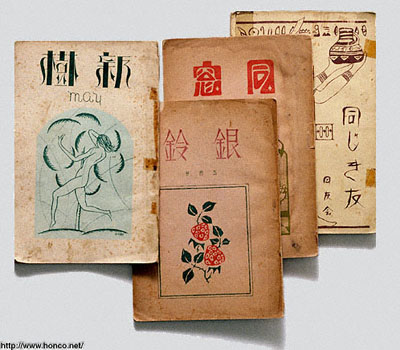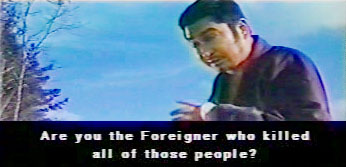FujiTV News reports that on March 5, a construction worker in Koyabe, Japan dug up an ancient earthenware pot containing 1,295 gold and silver coins, worth at least 65 million Yen (approximately $500,000US). Some coins were dated Meiji 3nen (1871) but the bulk of the coins are over 400 years old. The media compared the construction worker to an old fairy tale about “Hanasaka jiisan,” an old man who digs up a pot of gold. There was no report about who now owns the gold.
Category: Japanese
Desktop Publishing in Japan 100 years ago
My friends were discussing ancient printing processes, and I pointed them to a very interesting site about the history of the “Toshaban.” Some of this site is still preserved at the Internet Archive.
The toshaban or “gariban” process uses the stencil process like silk-screen printing, with the speed and low cost of a mimeograph machine. It flourished in the early 20th century and developed into a wide cottage industry of amateur printers across the entire country. My university has a huge collection of music and film fanzines from about 1900 to 1960 printed in this manner, some are fantastic works of art, and obviously took an immense amount of effort to produce
The toshaban is becoming a lost art, but there recently has been a resurgence of fine-artists in Japan using the process. This website ends with a wonderful tale of these artists traveling to Laos to teach the toshaban to schoolteachers, who immediately loved the low-tech process for its simplicity and low cost.
Downloadable Reference to Japanese Paper Dimensions
I’ve posted a chart of standard Japanese paper dimensions. This will primarily be of use to graphic designers, artists, or researchers that need a quick reference to dimensions of prints, photographs, or other papers. This TIFF file is very small, only 216K, but very high rez and optimized for laser printing. Iy should be easily viewable if you click on the image to zoom in (the type is very tiny, the original document was a wallet-sized card).
I picked up this reference card in an art supplies shop in Tokyo several years ago. This may seem like an extremely obscure set of information, but there really is an interesting story behind it. Governmental regulations on paper dimensions go back hundreds of years in Japan, and the archaic names in kanji (i.e. “hanga” or “half-picture”) still give a hint of that ancient system.
85 Whales Beach in Hasaki, Japan; 32 saved
FujiTV News reports that 85 whales beached in Ibaraki Prefecture, 32 were transported to a nearby deep harbor and released back to sea. The "melon-headed whale" travels in pods of 100 to 500. Last year near this same spot, 50 whales beached themselves. Local residents of Hasaki that assisted the biologists in the rescue were left with the task of disposing of tons of dead whales. One local resident said "last year, we cut them up and ate them…they were delicious." And again this time, the prime cuts were quickly carted away by fishmongers.
The report concluded with government warnings against eating possibly-diseased whale meat, and complaints of the cost of disposing of beached whales. Kagoshima Prefecture recently spent ¥25Million (about $186,500) to bury whale carcasses, and Hasaki faces similar disposal costs.
Zatoichi
Recently I’ve been watching the old Japanese film series “Zatoichi” on the Independent Film Channel. Zatoichi is a legendary blind swordsman who roamed Japan during the late Tokugawa era. Unfortunately I missed the first few films of the series, and I have no idea how the legend of Zatoichi began or why so many people want to kill him.

